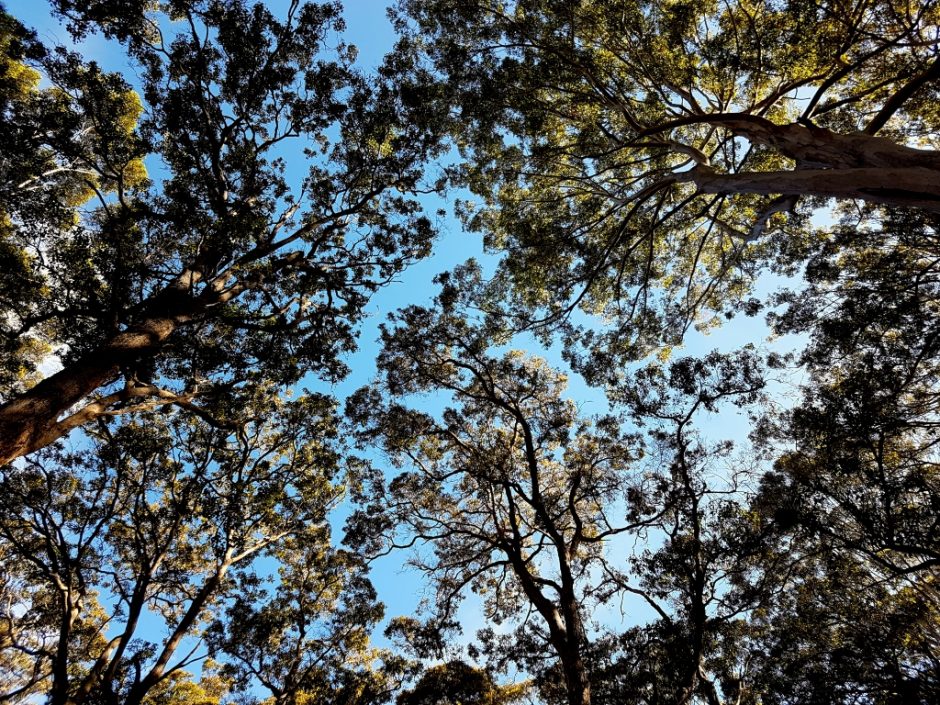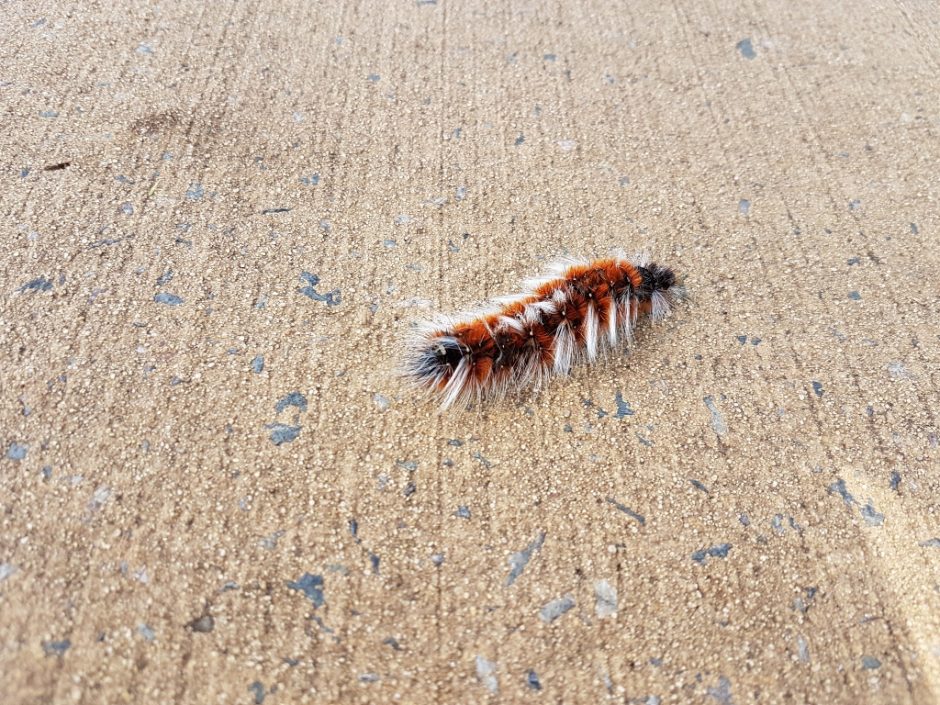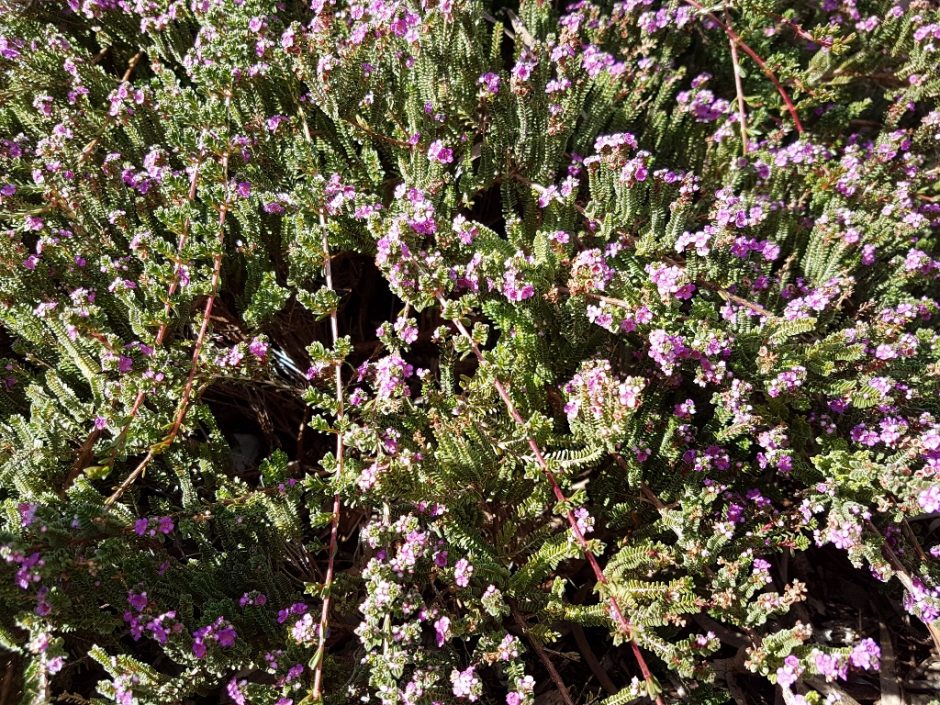Extending Our Selves
by Jessica White
Every afternoon after school, I changed my black school shoes for joggers and ran through the paddocks for half an hour. On weekends I ran through the hills at the back of our house, my joggers slipping on bark and leaf litter. Heat rose from the earth and coiled around my ankles. Slabs of granite gave off a warm, clean scent and cicadas wove a thicket of sound. At my footfall, roos bounded away and wild goats stepped nervously through pine trees. On hot summer days, I defied my mother and ran out in the baking heat. As my feet slammed down, clouds of locusts lifted from the dry grass. In winter, I ran as the sun went down. Dew drew out the rich smell of soil, while cooling air dried my sweat, tightening my skin.
I was thirteen. Deafness meant that I wasn’t transitioning into adolescence easily. Children learn to socialise by listening to their family and peers, but I couldn’t hear well in a conversation of more than two people and had never once overheard a conversation in my life. I had little idea of the nuance and complexity of social rules and at school I sat by myself, surrounded by ribbons of conversation that I tried constantly to catch. By contrast, the solitude of the bush was a balm. There were no conversations to tax me, no one to please, no anxiety from failing to respond or act in the correct way. There was only the piquant smell of eucalyptus, sunlight hitting my skin, sweat trickling down my ribs.
When the brain is deprived of information from one sense, it often compensates with above-average performance in other senses. This is known as ‘cross-modal plasticity.’ There are a large number of anecdotal reports of people with a sensory loss demonstrating extraordinary ability with one or several of their remaining abilities. The French writer Diderot described the famous case of a blind mathematician who could recognise fake from real coins by touching them.[1] Research on animals has also shown that enhanced visual performance in deaf people is caused by the reorganisation of the auditory cortext.[2] This increased attention makes sense, as deaf people who sign need to focus on the movement of hands and faces. Others might need to pick up movement in the corner of their eye, such as a car coming towards them which they cannot hear.
My own experience is that my sense of smell and taste are acute; I am alert to visual detail and body language; and I enjoy touching surfaces to see what they’re like. I also need to deploy these senses constantly to compensate for things I might miss. It’s one of the reasons why I’m always tired, but it has also meant that, from a young age, I have been aware of selves other than my own. I have stood on the fringes of conversations, trying to listen but inevitably giving up, my attention settling instead on a honeyeater digging into a nearby grevillea. As someone who has been made to feel less-than-human on a number of occasions, deafness has also given me much sympathy for non-human creatures. I watch how they are treated differently, and also how they communicate differently, to humans.
Since 1999, I have been researching nineteenth century botanist Georgiana Molloy, who emigrated from Carlisle in England to Augusta in south-west Western Australia in 1829. Trained in the ladylike art of collecting seeds and specimens, she began collecting in earnest following the death of her son in 1837, sending her seeds and specimens to a horticulturalist, James Mangles, who lived in London. As she collected, her relationship to her environment changed dramatically, shifting from aversion to passion. From describing the ‘unbounded limits of thickly clothed dark green forests where nothing can be described to feast the imagination’ to her sister in 1832, she began to attend with fastidious care to the details of seeds and the morphology of plants.
When I came to write about Molloy’s life and the plants she collected, I knew it wasn’t possible to write a conventional biography because, following her son’s death, a part of her body entered the earth. Her self extended into the non-human world, as mine had when I ran through the bush all those years ago. I realised that, if we cannot have a life without the lives of other inhabitants such as fungi, bacteria, animals or air, then it was desirable, in creating a piece of autobiography, to include the lives that sustain it: the autos or ‘self’ of a biography should include our environment. A literary representation of this relationship is known as ‘ecobiography’. Not merely an autobiography of an environment, an ecobiography details the imbrication of a human self with that environment, rendering the lives of each inhabitant with significance.
The first reference to this mode was made by Cecilia Konchar Farr and Philip Snyder in 1996, who describe it as ‘a life-story constructed according to a pattern divined internally through the Self’s interaction with the external environment, especially Nature, the multiple exchanges of which (re)present a kind of ecosystem of the Self.’[3] In these life stories, they continue, ‘it is impossible to tell where the Self ends and Nature begins or where Nature ends and the Self begins: ego and eco are inextricably intertwined.’[4]
Ecobiographies by non-Indigenous Australians include Mark McKenna’s Looking for Blackfella’s Point, Annamaria Weldon’s The Lake’s Apprentice, and Kim Mahood’s Craft for a Dry Lake and Position Doubtful. Importantly, there are a number of ecobiographies written by Indigenous Australians. Over thousands of years of inhabitation, Indigenous Australians managed and cultivated their environment with firestick farming, the use of fire to create pasture that encourages the presence of game such as kangaroos. The arrival of British colonists disrupted this interplay as they used the country’s natural resources for capital gain. The ramifications of this are still reverberating painfully, as Tony Birch writes, ‘The relationship between colonialism, capitalism and environmental degradation and a consequent link to climate change is unambiguous.’[5] Ecobiographies such as Kim Scott’s That Deadman Dance and, written with Hazel Brown, Kayang and Me, Dick Roughsey/ Goobalathaldin’s Moon and Rainbow, Doris Pilkington’s Follow the Rabbit-Proof Fence and Oodgeroo Noonuccal’s Stradbroke Dreamtime describe the deep and abiding relationship between Indigenous people and their country, and how this was disrupted, but not destroyed, by colonisation.
In writing my ecobiography of Molloy, I am drawing on my years of attending to my environment as a deaf person. Even though I now live in a city, I still watch bush turkeys cross the road, feel storms gathering and pressing against my body, smell muddy mangroves when the Brisbane River’s tides are out. Yet anyone, whether with five senses or not, whether in the city or the bush, can attend to the non-human world and recognise its importance. The next time you step outside your door, listen not for aeroplanes, but for a magpie warbling; feel your skin prickle with sweat before you step into the air-conditioning; ignore the smell of exhausts and seek the sweetness of frangipani. For if we, and our increasingly-stressed environment, are to survive, it is crucial that we recognise and respect the lives upon which we depend.
[1] Frasnelli, et al. “Crossmodal Plasticity in Sensory Loss.” Progress in Brain Research, vol. 191, 2011, pp. 233–249, p. 233.
[2] Ibid, p. 240.
[3] Cecilia Konchar Farr and Philip A. Snyder. “From Walden Pond to the Great Salt Lake: Ecobiography and Engendered Species Acts in Walden and Refuge.” In Tending the Garden: Essays on Mormon Literature. Ed. Eugene England and Lavina Fielding Anderson, Signature Books, 1996, pp. 197-212, p. 198.
[4] Ibid., p. 203.
[5] Tony Birch, ‘Climate Change, Recognition and Social Place-Making’ in Unstable Relations: Indigenous People and Environmentalism in Contemporary Australia, p. 361.


